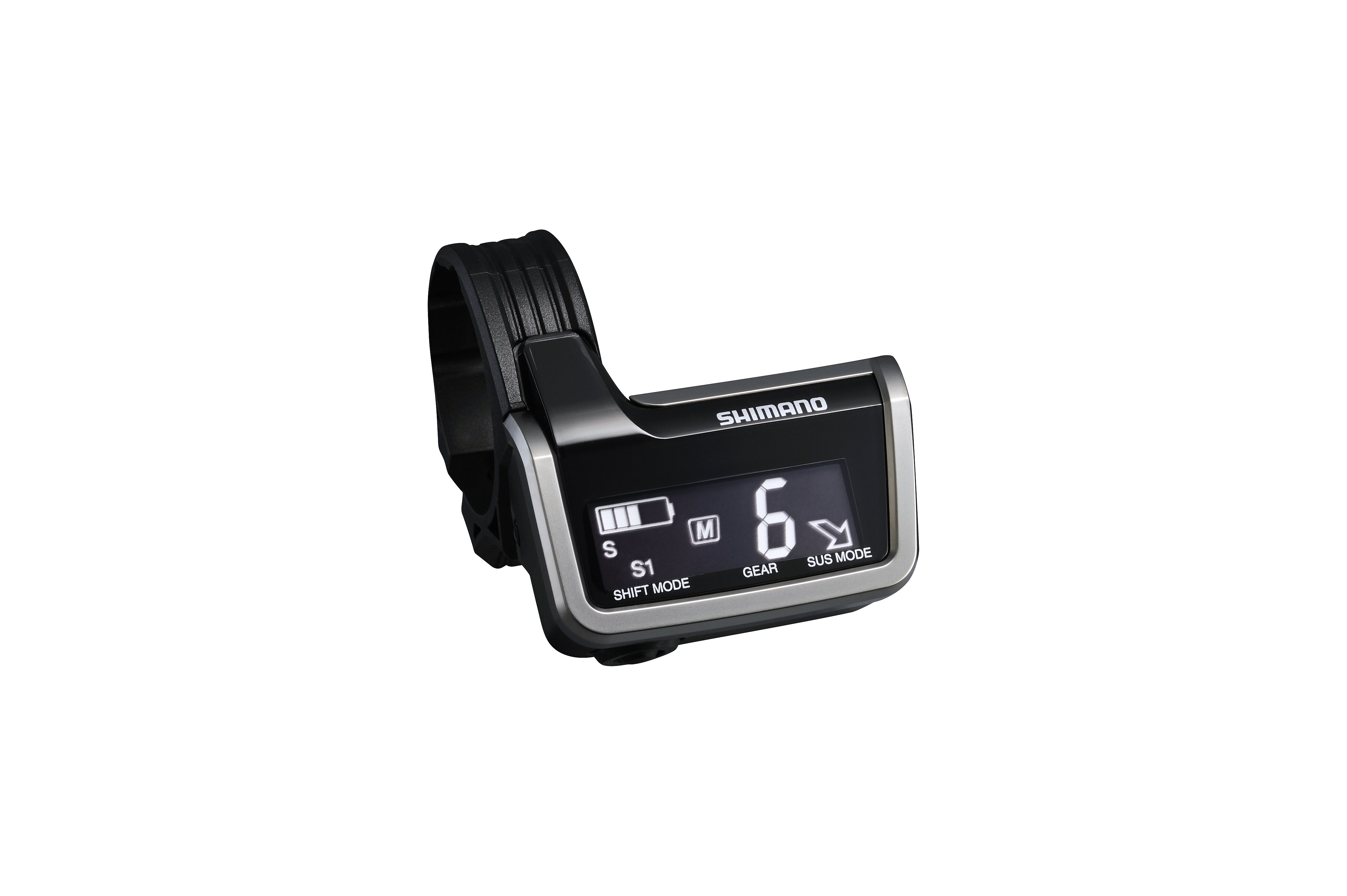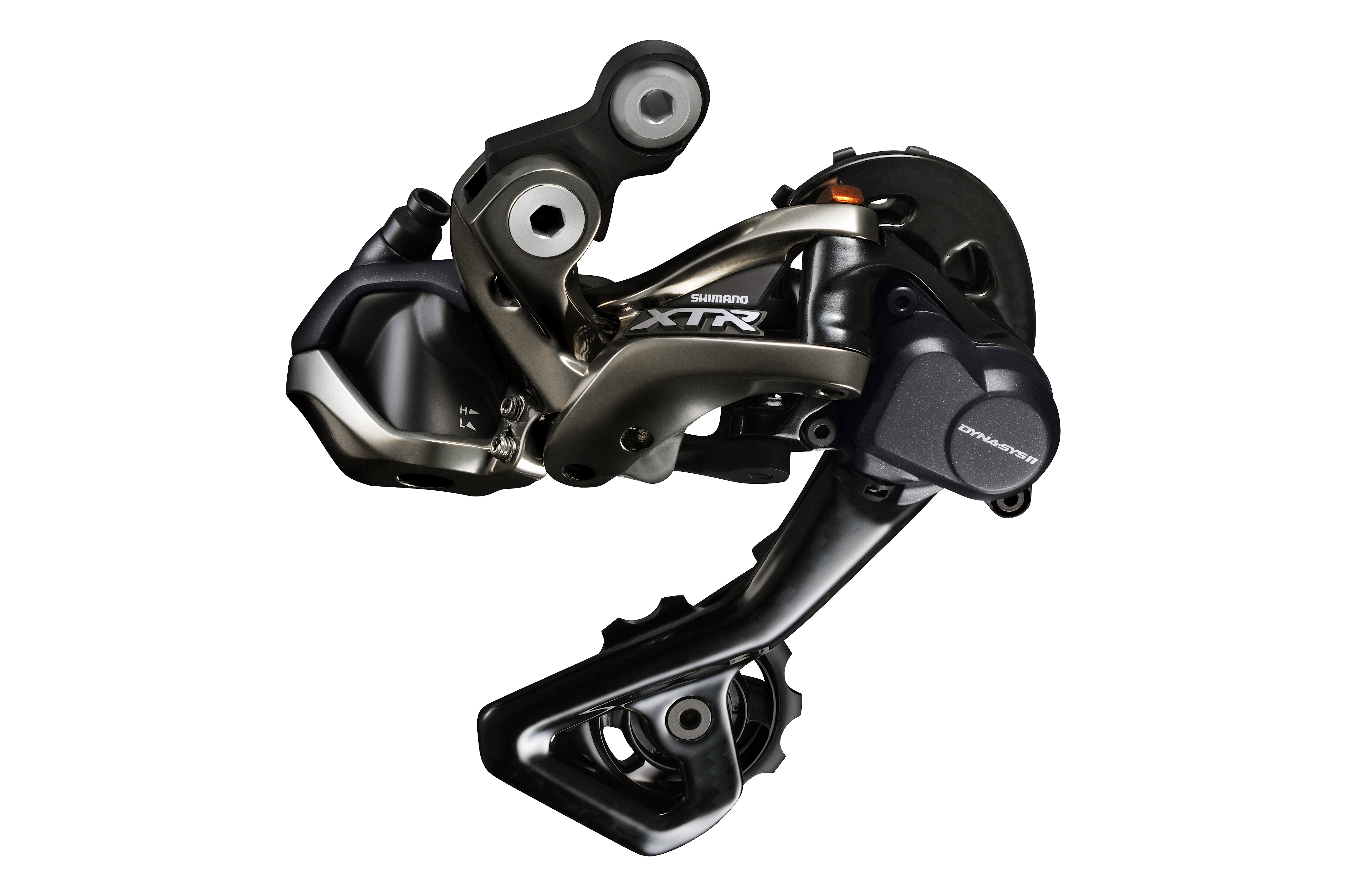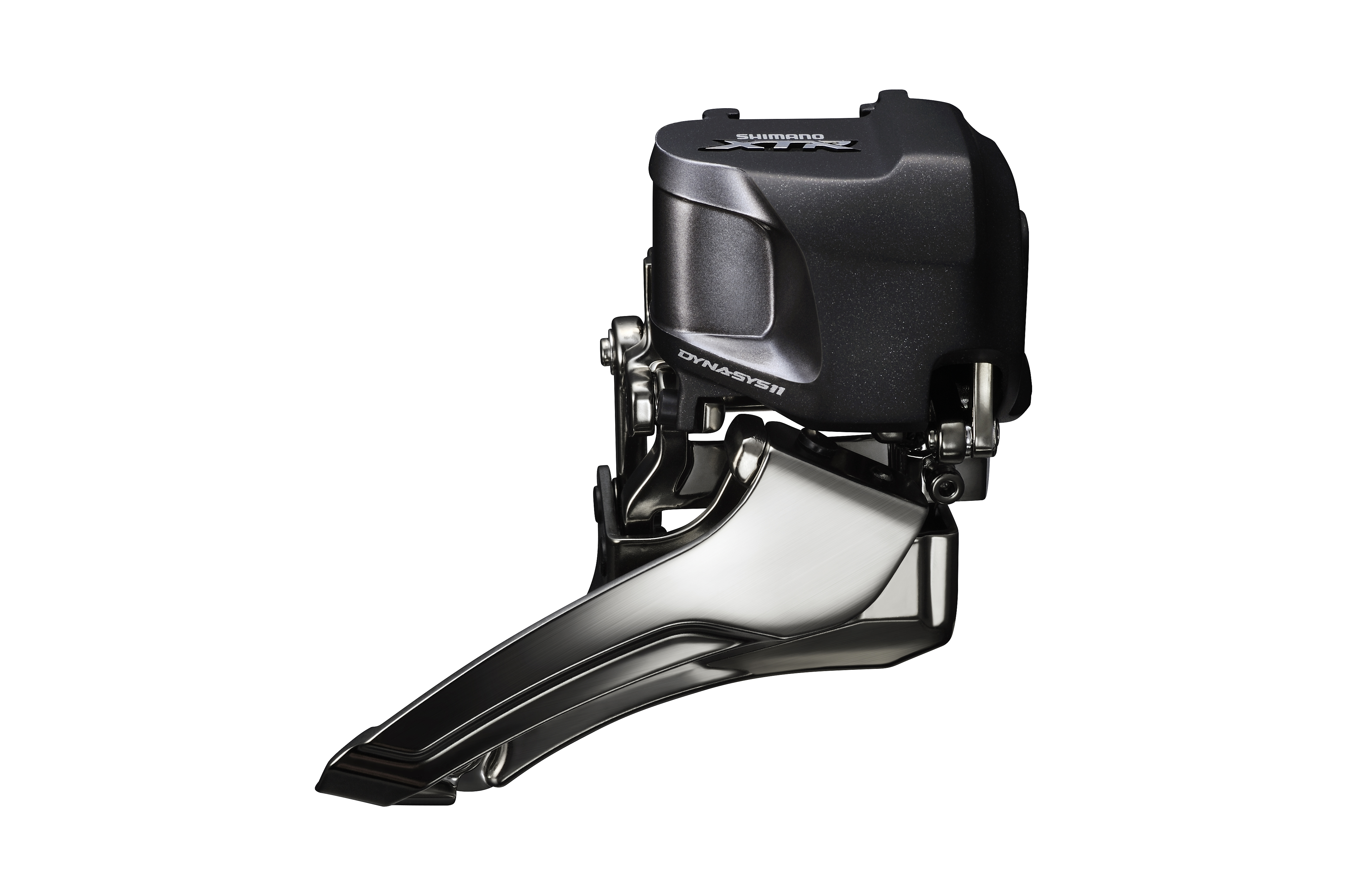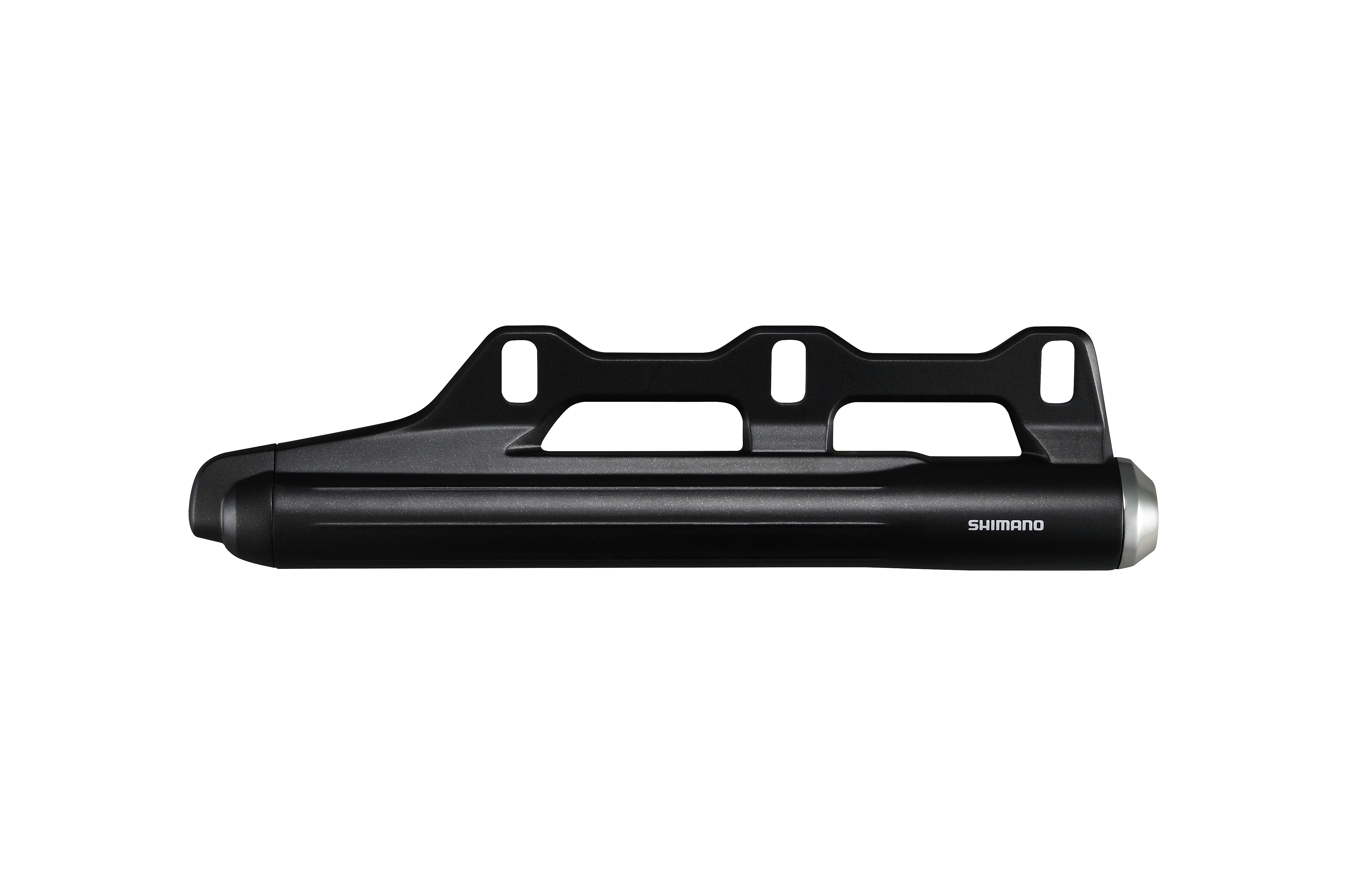Shimano officially announces M9050, an electronic shift system for their flagship offroad component group, XTR M9000. In many ways, this is one of the least surprising announcements since SRAM went to 11-speed for the new Red group a couple years ago. Shimano’s Di2 concept has been highly successful in the company’s road offerings, so of course they’d like to bring that to the dirty demographic. One tip-off I noticed was when I downloaded the PC program for the Di2 diagnostic tool for customizing Di2 road systems, and the menu options included road bike, city bike (for the Di2 Alfine internally geared hub system), and mountainbike….hmmmmmmm. But even if we knew it was coming, XTR Di2 could have even greater potential than electronic shifting on the road. Let’s cut to the chase: what’s most impressive about M9050 is the option of using just one shifter to handle 2×11 or 3×11 drivetrains. You shift up or down on the buttons, and the SYNCHRO SHIFT system automatically shifts a sequential pattern.
When using a single shifter in either a 2×11 or 3×11 drivetrain, Synchro Shift will shift front and back derailleurs in order to give you a sequential progression of gearing. You don’t have to think about it, it just does it for you. This could only work because Shimano’s electronic front derailleur and chainring designs are indisputably the best, such that front shifts occur with practically the same speed and conviction as the rear. Still, it’s not hard to imagine a situation on a trail when an unexpected front shift might upset your groove. Synchro Shift incorporates an audible signal that indicates that a front shift is imminent, but it also offers on-the-fly choice of two presets for the sequence of chainring/cog combinations (what Shimano refers to as a shifting “map”) to suit your riding style or the immediate terrain. The presets are can be reprogrammed with Shimano’s Di2 diagnostic tool. You can even program the drivetrain to skip specific combinations, such as a big ring/big cog combo, which would be a good if, for example, your long travel rear threatens to exceed the capacity of your derailleur.

The idea of sequential shifting has been around for a while, and in fact some people have already hacked road Di2 systems to the same effect. However, I can’t see road racers en masse leaping on that idea in the near future. That’s because despite all the carbon frames, additional cogs, and threat of disc brakes, for road bikes wheel size, frame geometry, and the roads themselves haven’t changed much in 50 to 60 years of road racing. When old school racers talk about attacking in a 53 x 12, the younger generations understand. Meanwhile for mountainbikes the past 15 years have been a maelstrom of crank and wheel size developments; plus different genres of offroad riding keep cropping up (eg, enduro). So for road racers, ring/cog combinations are automatically referenced through the conventions of road bike tech and long hours in the saddle, whereas mtn bikers have no traditions for equipment configuration and their riding styles are characteristically dynamic. Why not just ride and let the microprocessors do the thinking for you? Shimano’s design focus is on the rider’s “flow”, via components that allow the rider to ride the trail instead of riding a bike on a trail. Of course, if turning over the destiny of your gear selections to an electronic intelligence fills you with apprehension, you can breathe easy knowing that you can switch to full manual shifting if you have installed two shifters (or just the one if you are running 1×11).

The physical layout of the system is similar to the electronic versions of the Ultegra and Dura Ace road groups. The derailleurs, shifters, and battery are connected with “E-tube” cables first seen on Ultegra 6770. Like the road groups, the shifter(s) connect to front junction, which then connects to a second junction to which everything else is individually connected. However, while the road version of the front junction offers just a simple LED as a battery indicator, the mtb version is a more elaborate visual display with battery life, current gear, and shift mode indicators. The rear road junction has four ports (one to the front junction, one each for derailleurs/battery) whereas the mtb rear junction has 6 ports and is integrated in the battery case, which is designed to be mounted next to a water bottle cage or on similar bosses. The additional ports allow you integrate control/power for Fox’s electronically adjusted rear suspension. Currently, XTR Di2 is not specifically marketed with an internal (seatpost) battery, but one could use the road version battery and it’s associated internal rear junction. I suppose you could daisy-chain 4-port internal rear junctions if you needed to run the Fox shock control and internal routing.

The Di2 XTR rear derailleur is a little bit of a sleeper, the low-profile “Shadow” design being very similar to the cable-actuated versions, and it also employs a roller-clutch mechanism to manage chain tension. To your average OEM product manager or retail shop buyer, the front derailleur is a gift from god. Why? Because in a world where SRAM has forty-two SKUs for XO front derailleurs, there is exactly one version of the M9050 front derailleur for either double or triple chainring cranks. It’s not cable-actuated, so top-pull/bottom-pull is irrelevant, and all the various seat-tube diameters and mounting standards are dealt with via adapters.

A lot of thought apparently went into the “Firebolt” shifter, particularly the orientation of the shifter thumb paddles, their texture, and tactile feedback when depressed, but I can’t say too much about that until I play with some. Again, you can run multiple chainrings with a single shifter (presumedly a right, but could be a left) in Synchro Shift mode. And with just one shifter, the electronic M9050 XTR weighs the same as as its mechanical analog. You could run this Di2 XTR as a 1×11, but since XTR’s widest cassette is a 11-40T compared to SRAM XX1’s 10-42T you won’t get the same versatility off a single chainring. However, Shimano is probably betting that you won’t care. XTR’s superlative front derailleur and Synchro Shift promise to make multiple chainrings every bit as fast and intuitive as a single chainring.

We're riding townies, adventure, and mountain bikes. Find recommendations on our store page. As Amazon Associates we earn from qualifying purchases.